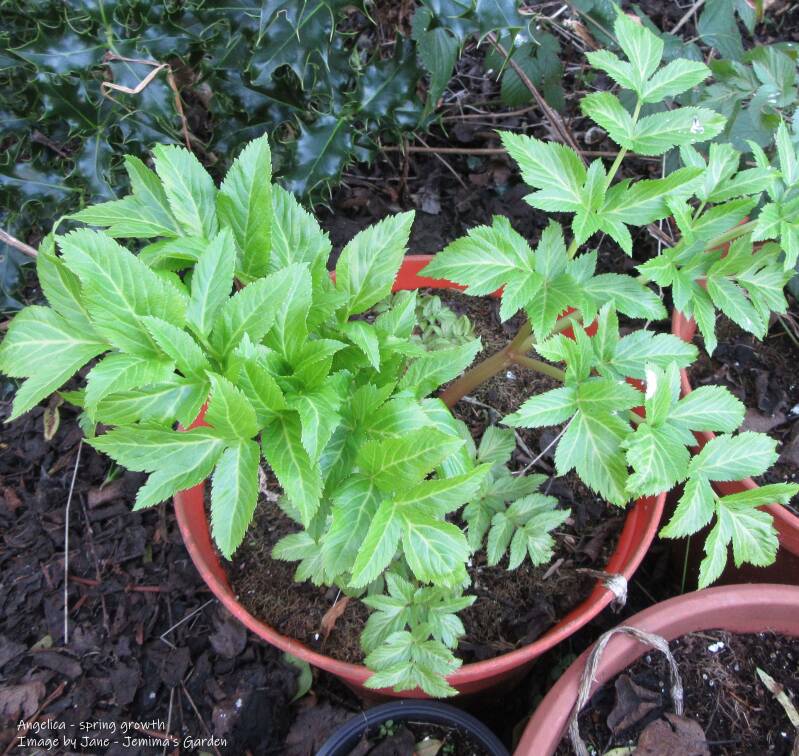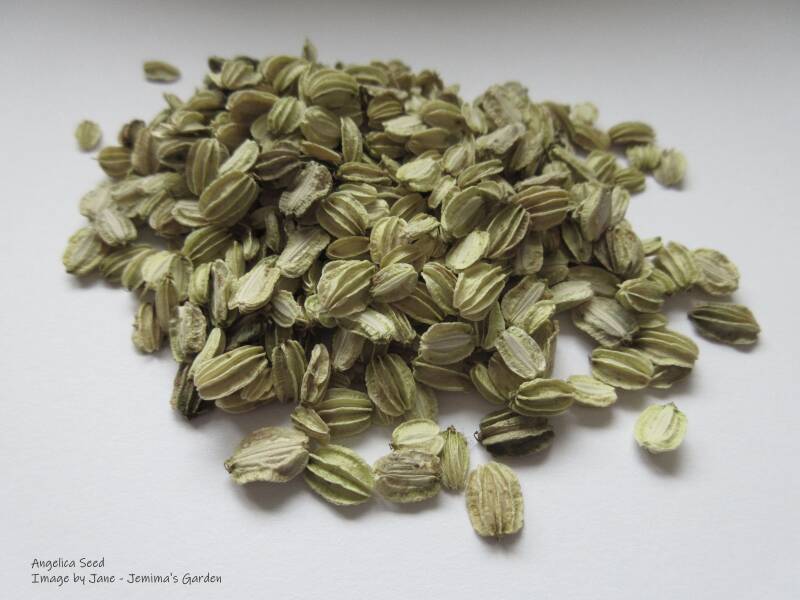Let me tell you about Angelica (Angelica archangelica)
A great big green monster of a plant that looks really impressive in a border or on its own, Angelica is a hardy biennial or monocarpic plant.
This means that in the first year it will produce some large leaves and in the second, it will probably grow large enough to flower and produce huge round greenish-white flower umbels.
Sadly, once the plant sets seed it will likely die but it should produce lots of seedlings. By cutting off the flower heads before seed is set, it's possible to keep the plant alive for a few more seasons.
The seed will not "keep" and needs to be sown while it's fresh, in the autumn of the year it is gathered.
It can be sown in any moist soil from well-drained to poorly-drained, in sun or partial shade. Do not cover seed completely as some light is needed to aid germination. If germination does not occur, don't give up. Cold stratification is often helpful and the seeds may germinate after being subjected to a cold spell.
Angelica is native to northern Europe although it has been introduced in many other places. As well as having confectionary and flavouring uses, it has been used in herbal medicine although it shouldn't be used without guidance. As a herb, it's an important ingredient of liqueurs and the green stems are candied and used as decoration. I remember my mum's fairy cakes usually had a couple of Angelica "leaves" either side of the glacé cherry "flower". Now the smell of Angelica takes me back to childhood treats 🎂

The best reason for growing Angelica relates to it's benefits for wildlife.
Angelica flowers and seeds provide food for :
- Bees
- Hoverflies
- Butterflies
- Moths
-
🦇 Listed in: Bat Conservation Trust Encouraging bats, A guide for bat-friendly gardening and living
🦇 (RHS) Listed in the RHS Plants for Bats list
- Beetles
- Birds
It's also an RHS "Plants for Pollinators" plant.
This plant has a reputation for giving protection against evil and is used in protection and exorcism incenses. Sprinkling Angelica around the perimeter of the house is said to ward off evil. I wonder if growing several in the garden would do the same? I'd like to think it's worked its powers in our garden.
Culpeper, in his 17th century herbal, tells us that "it is a herb of the Sun in Leo" and we should "Gather it when he is there" but there's a problem with cutting it in the sunshine. Please ensure you don't get sap on your skin - please see warning below.

We do have a limited stock of fresh seeds for sale, harvested this summer from the plants in our garden in Scotland.

Caution: Take care when handling Angelica plants as contact with the sap/foliage may increase skin photosensitivity, (sensitivity to the sun), and may cause a rash or blisters.




Add comment
Comments